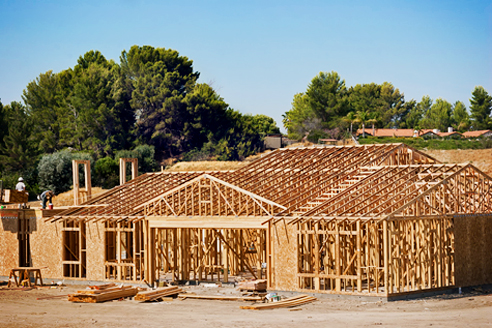CLT: Sustainable Building Materials in Australia

Last year's amendment to the National Construction Code brought the use of timber to new heights, literally speaking. The amendment enables timber-built buildings to reach up to 25 meters in height to be lodged with planning under deemed-to-satisfy provisions. The update gave the timber construction industry, green building enthusiasts, architects and designers the chance to start using timber for their projects with less difficulty.
Cross-laminated timber (CLT) are wood boards consisting of three, five, or seven layers of dimension lumber positioned at right angles to one another and then glued to form structural panels with excellent strength, dimensional stability, and rigidity. Cross-Laminated Timber is an engineered material that controls cross-grain movement using its cross-lamination. The material shrinks less than standard solid timber construction. CLT's light weight lessens load on foundation which in effect minimises the use of materials with high embodied energy.
Since its development in Austria and Germany in the early 1990s, the use of CLT has crossed the globe with its strong structural properties and low environmental impact. With the growing demand for low impact building materials, CLT is proving to be not only a sustainable choice but also a cost-competitive alternative to masonry, concrete and steel.

Typical properties of CLT include a thermal conductivity of 0.13 W/mK. Its density is typically between 480 - 500 kh/m³. When perpendicular to grain of boards, the compressive strength is up to 2.7 N/mm2 while it lodges 24-30 N/mm2 when parallel to grain of boards.
Timber is famously a renewable material, same with CLT. CLT stores carbon throughout its lifespan. Its long lifespan also ensures less waste. The material is typically kiln dried with low moisture content to impede fungal and pest attack.
CLT essentially avoids thermal bridging when employed for parapet wall or flat roof solutions. Its levelled composition prevents loopholes for heat to escape, thus, maintaining the proper insulation of building components. This also attributes to its greater load distribution that can reduce the thickness of slabs for better transportability while retaining product build quality. Builders and contractors can maximise productivity when working with CLT for a simple and fast onsite construction process.
With CLT, developments with robust and upfront blueprints can improve overall design and efficiency. The finished wall construction exhibits a high degree of vapour permeability to mitigate the effects of moisture under relevant weather conditions. Suitable for non-visible finishes, CLT is also compatible with exposed finishes.
As technology opens doors to more advanced building methods, there can only be more possibilities for CLT to make it an even more worthwhile material for use in timber building construction.
Join the session entitled "Sustainable Building Technologies - Featuring CLT Construction" at the DesignBUILD Expo on 3 May 2017 at the Theatre 2 from 14:00 - 14:45 happening in the ICC Sydney, Darling Harbour. Sign up online today!

|





 DesignBUILD 2020 Postponed Until October
DesignBUILD 2020 Postponed Until October Planning your Kitchen Renovation:
Planning your Kitchen Renovation: DesignBUILD 2020: A Focus on the Latest
DesignBUILD 2020: A Focus on the Latest Prefabricated Construction at
Prefabricated Construction at Architectural Excellence with Interior
Architectural Excellence with Interior 3D FDM Printing: What are the Important
3D FDM Printing: What are the Important Insulated Buildings and Cooler Streets
Insulated Buildings and Cooler Streets How Construction Software is Changing
How Construction Software is Changing DesignBUILD 2019: Commercial Platform
DesignBUILD 2019: Commercial Platform Evolution of Smart Cities at DesignBUILD
Evolution of Smart Cities at DesignBUILD DesignBUILD 2019: Speaker Series
DesignBUILD 2019: Speaker Series What's on at DesignBUILD 2019?
What's on at DesignBUILD 2019? The Rise of Engineered Timber Buildings
The Rise of Engineered Timber Buildings Stay Relevant: How to Handle Rapid
Stay Relevant: How to Handle Rapid Trending Lower: Australian Building
Trending Lower: Australian Building Sustainable Architecture: How to Build a
Sustainable Architecture: How to Build a Innovative Building Ideas from the
Innovative Building Ideas from the Global Building and Construction
Global Building and Construction Key Drivers of Prefab and Smart Modular
Key Drivers of Prefab and Smart Modular 3D Printing Sustainable Construction
3D Printing Sustainable Construction
